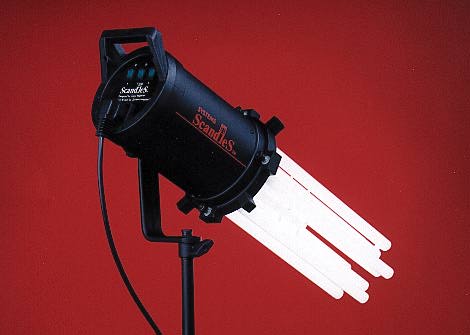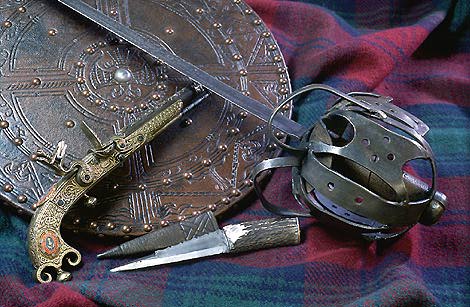
Elliott have one advantage - they are adding Praktica greyscale and colour scan-cameras to a large range of photographic products including Toyo cameras, Schneider lenses, and the new Scandles high-frequency fluorescent digitial studio lighting designed by American Gary Regester and manufactured in England by Systems Imaging.
We use a Leaf Lumina not only to reproduce mounted prints as a scanner, but also to shoot product pictures; these days, we only use film for creative work, fine art prints and stock images. No-one really wants a negative and print of any of the product pictures we take for the magazine, for example, so every single one is photographed on the Lumina.
These scanning cameras, now coming right down in price, will provide the introduction to filmless photography for most still-life, catalogue and product photographers in the next couple of years. They require exposure times of anything from 30 seconds to five minutes, on a vibration-free stand, and the lighting used must be flicker-free. Ordinary low-power tungsten and fluorescent lights interfere to create patterns on the image.
There are two solutions - one is plenty of tungsten light, over 800kW per head, used with a small aperture and longer exposure time. Exposing the CCD sensor for maybe 100 microseconds per line instead of the possible minimum of around 15ms ensures a pattern-free result. However, tungsten is highly inefficient at matching the spectral response of the RGB filtered CCD, and you need around 2kW together with excellent ventilation and a heatproof subject. When used correctly, however, tungsten can be very good because of the range of direct and indirect effects easily achieved using attachments and different types of light.

The high-frequency fluorescent solutions which hold large flat arrays of tubes can only imitate soft-box lighting and are cumbersome to position. Regester's Scandles design uses long U-shaped Philips daylight tubes sticking out towards the subject from a standard flash-head housing, like half a dozen of Darth Vader's light-swords in a bunch.
This design allows various types of light bank and deep reflector to be fitted, using a Chimera or Photoflex adaptor ring, and permits output variation by having two, four or six tubes switched on without changing the light quality.
In practice, the light looks very dim (it takes ten minutes or so to warm up fully). It also has an unpleasant colour, visually, compared to tungsten. All this is an illusion. To the CCD camera, it is eight times as efficient as an equivalent visual level of tungsten light and has a perfect neutral colour balance. It is also possible to dispense with infra-red cut off filters for many subjects, as the tubes don't emit much IR.
You should be able to light any artwork original or studio still life with two Scandles units; the 6 x 35W tube power used is negligible (probably less than your computer and monitor), and the overall twi-head outfit cost with the recommended rectangular soft-boxes and deep reflector will be under £1,500.

These weapsons are from Leith, Edinburgh, shop Battle Orders Scotland Ltd - where you can buy or hire all the gear necessary to do your own 'Rob Roy' shots, including a particularly scary replica of William Wallace's sword which we could not fit in the studio. Leaf Lumina, one Scandles light head, and an 800kW tungsten coming from the rear top right as an accent light - showing how a diffused fluorescent can easily match a direct tungsten in brightness for this application
Our tests show that Scandles provide everything claimed except freedom from coloured shadow noise or slight scanline banding. In this respect, the lights do not seem better than tungsten, and it is still necessary to use longer than desirable exposure times to eliminate the problem. HMI lighting, which would cost £5,000 for a similar capacity, still has the advantage of ultimate quality with digital scan-cameras.
Having said this, there is a great difference between Scandles, which can be left on all day and run cooler than the average studio flash modelling lamp, and any alternative currently available. They have to be recommended as the lowest cost high efficiency lighting currently offered for digital scan-backs and scanning cameras.
All of this must, of course, lead to the development of rival systems by those like Agfa and IMC or Leaf who will no doubt see George Elliott & Sons Ltd bundling the forthcoming Praktica colour scan-camera with a multimedia PC, Scandles lighting kit and a suitable studio stand at a price within the range of most small photographic studios - the Praktica's first allegiance being to PC rather than Mac systems.
We look forward to seeing exactly where the entry-level price for these kits ends up, but there is no doubt now that any photographer owning a decent 486 or better PC can set up a filmless digital still life studio with less than £5,000 of additional investment.